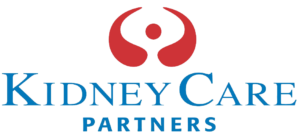On World Kidney Day, the Kidney Community Acknowledges the Historic Alignment Between Public and Private Stakeholders on Key Policies to Improve Access, Choice and Innovation in Kidney Care
March 12, 2020
WASHINGTON, DC—Kidney Care Partners (KCP) – the nation’s leading coalition of more than 30 organizations comprised of patient advocates, dialysis professionals, care providers, researchers and manufacturers – acknowledges the historic alignment to address the public health care challenge among millions of Americans living with kidney disease. The Administration, Congress and the broader kidney care community have committed to work together on several policies and programs to improve access, patient choice in treatment options and innovation in care.
According to the Centers for Disease Control and Prevention (CDC), an estimated 37 million Americans are living with kidney diseases, costing the healthcare system billions of dollars. Despite the challenges of caring for this population, a new data analyses by Discern Health, which analyzed United States Renal Data System (USRDS) data, shows advances in keeping the kidney community’s most vulnerable individuals – those with end-stage renal disease (ESRD), or kidney failure – healthier. The analyses were funded by KCP, which works together on policies and programs to improve quality of care for individuals living with chronic kidney disease (CKD), ESRD and kidney transplants.
If left untreated, kidney diseases can develop into ESRD – requiring dialysis or a kidney transplant to sustain life. Currently, nearly 500,000 Americans rely on dialysis for their long term kidney care needs, or while they await a kidney transplant. Approximately 100,000 Americans are on the transplant waiting list, which can take 3-5 years on average from either a living donor or cadaver donor for those patients who qualify.
According to the Discern analyses, individuals with ESRD are among the most complex and costly Medicare beneficiaries. However, advances in dialysis care have led to improvements in patient survival and reduced costs to Medicare. These advances in care – despite historically inadequate Medicare reimbursement rates – have also allowed individuals to spend less time in the hospital, saving taxpayers an estimated $761 million since 2010.
Medicare’s ESRD Benefit, which is the primary payer for more than 80 percent of patients receiving dialysis, is a bundled payment system which has insufficient incentives for innovation, and historically there has been less investment in innovation to treat kidney care than other prevalent conditions such as cancer and cardiac diseases.
“On World Kidney Day, it is encouraging to reflect on the continued progress we’ve made for individuals in ESRD despite difficult challenges and obstacles we have faced, including inadequate Medicare reimbursement rates and limited resources for research and innovation compared to other common disease conditions,” said John P. Butler, Chair of KCP. “But the kidney care community can do more – working with policymakers – to improve patient access and choice related to care, ensure the stability of Medicare’s ESRD Benefit, and promote policies that incentivize research and innovations in kidney care.”
The kidney community released Kidney Care FIRST: A Framework for Improving Renal Disease Support & Treatment last year that offers a renewed vision of critical policy priorities and strategies to address the full spectrum of the kidney disease cycle. Fortunately, many of these priorities align with the Administration’s Advancing American Kidney Health initiative, bipartisan efforts in Congress, and innovative programs such as KidneyX – all of which are moving ideas and innovations forward to improve kidney care.
“Today marks an exciting and hopeful time for kidney care in America,” added Butler. “There is a new focus and awareness around efforts to improve care across the entire disease spectrum, which is made possible by this historic alignment between all stakeholders in our community, Congress and the Administration.”
###
